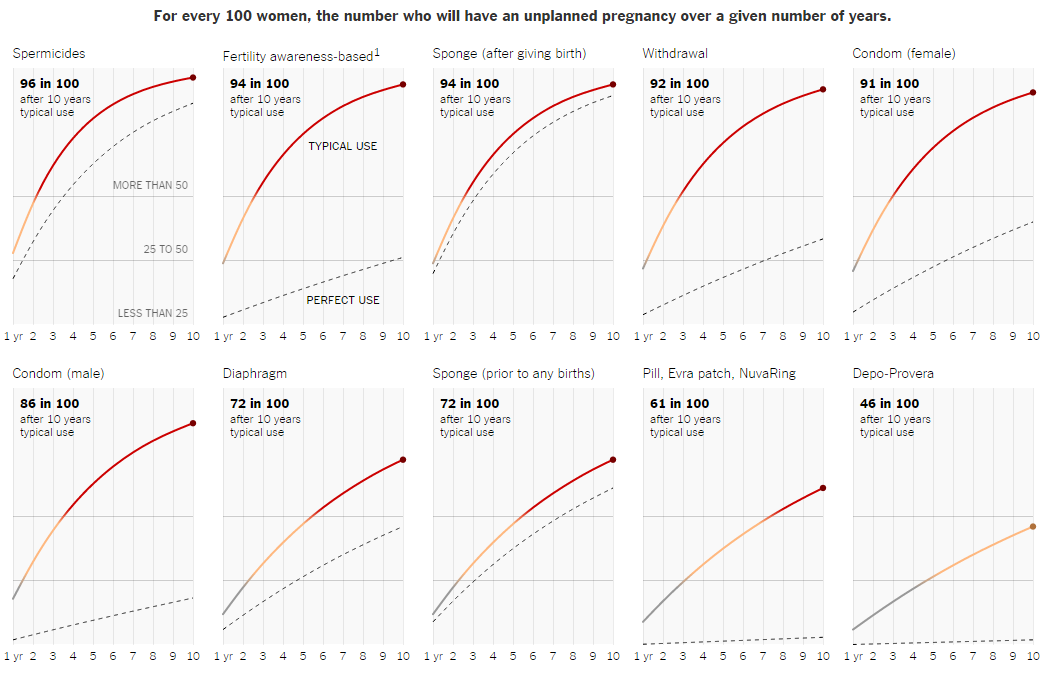The New York Times recently published an interactive that illustrates the likelihood of pregnancy despite contraceptive use. Risk is divvied up by method, for perfect and typical use, and added up over 10 years. The results are a little terrifying (go here to explore the interactive):

Somewhere around half of all pregnancies are unintended. This is why: It’s hard enough to use contraceptives perfectly but, even when we do, the risk of failure is very real.
Male condoms are the safer sex favorite. But, even when used perfectly, almost one in five women will get pregnant over a 10-year period. With typical use, more than four out of five. Withdrawal, one primary foil against which male condoms are usually recommended, is only slightly less effective at preventing pregnancy, as typically used.
The favorite of Americans—the Pill, as well as some other hormonal methods—is more effective than the condom, but not nearly as much as we think it is. Under ideal conditions, only three in 100 will get pregnant over 10 years; in reality, almost two-thirds—61 in 100—will end up pregnant.
Only the most human-error resistant methods—the IUD, hormonal implants, and sterilization—near 100 percent effectiveness. These are permanent or semi-permanent and not real options for a large proportion of sexually active Americans during at least some parts of their lives.
Discussions of the right to an abortion and the ease with which they can be attained needs to be had with this information at the forefront of the discussion. Unintended pregnancies happen all the time to everyone.
This post originally appeared on Sociological Images, a Pacific Standard partner site, as “Chart of the Week: We Have Less Control Over Our Reproductive Bodies Than We Think.”





